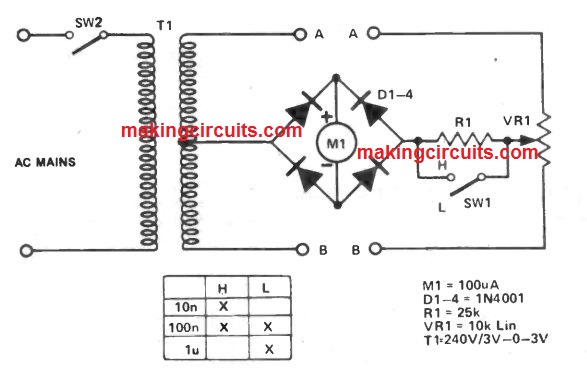This simple capacitor tester can be used to identify the values of unknown capacitors.
This bridge design was actually built to come across values for odd, unmarked or unknown capacitors.
Whilst not really being of good reliability, it can provide a great sign towards the value of the capacitor.
A well-known value component is positioned around terminals A-A, polarity is simply not essential, yet polarised capacitors should not be employed, and also should not be tested.

The capacitor under test is placed in B-B, the unit is turned on and VR1 moved till a optimum value reading is acquired on meter M1.
At this moment, a reading is extracted from the calibration scale within the pot which will at first should be calibrated in ratios, for example: 1000:1, 100:1, 10:1, 1:1, 1:10, 1:100 etc.
The unidentified value is now calculated using this reading. Original calibration is from known values.
To improve the range of this capacitor tester circuit switch SW1 continues to be incorporated to bypass R1.
Considering that the frequency utilized is 60 Hz through the AC line, ranges are minimal;
If an additional source have been employed, driving an audio output transformer, the usefulness of the unit might then be further more enhanced.
Building of 1kva pure sine wave inverters and transformer 1kva inverters